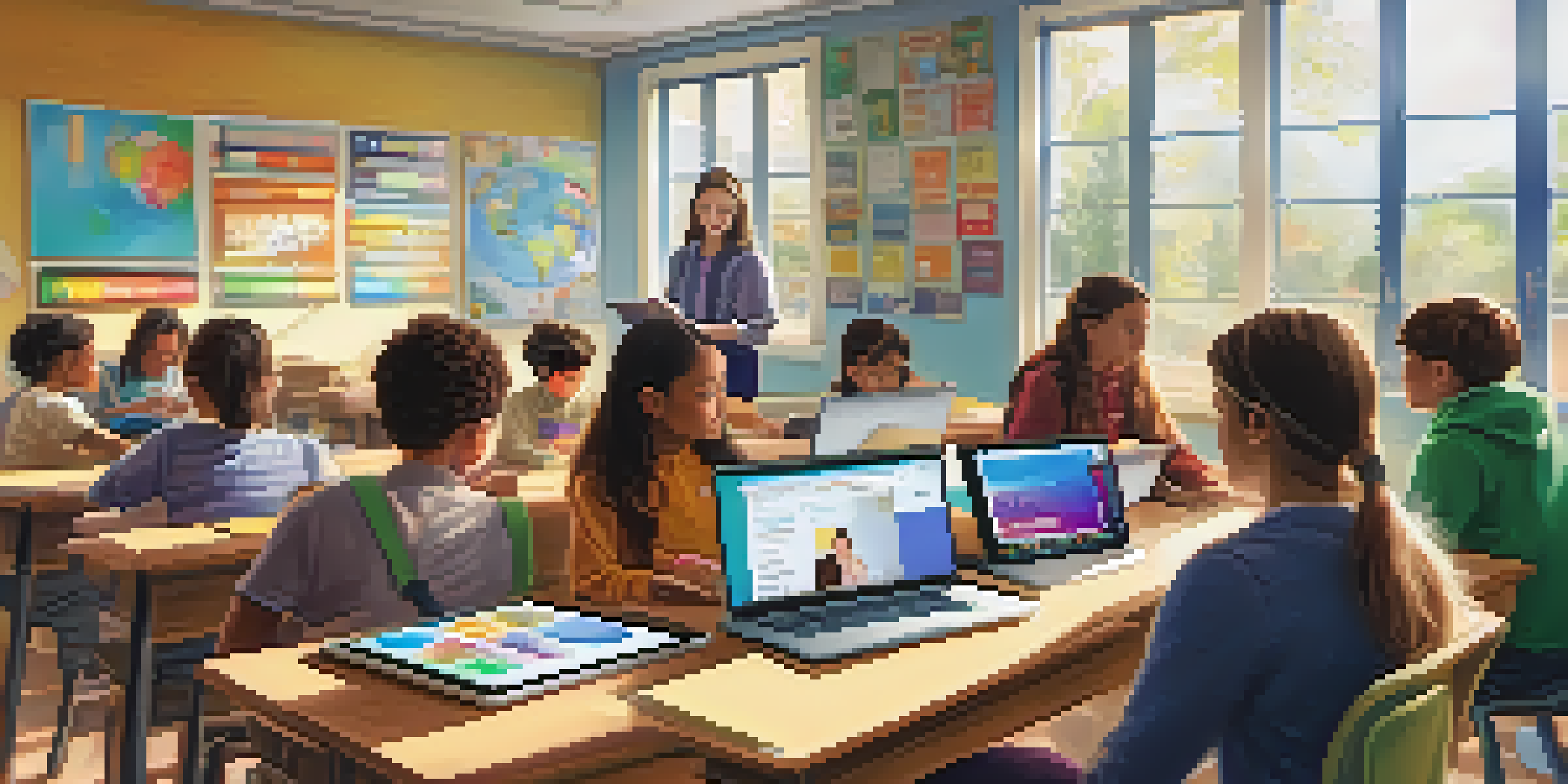Social Media as a Tool for Teacher-Student Communication

The Rise of Social Media in Education
In recent years, social media has become a cornerstone of communication in various fields, including education. Platforms like Facebook, Twitter, and Instagram are not just for socializing; they can also foster connections between teachers and students. With millions of users daily, these platforms provide an accessible space for educational discussions and announcements.
Education is the most powerful weapon which you can use to change the world.
Imagine a classroom where students can reach out to their teachers with a simple tweet or a message on Instagram. This immediacy breaks down traditional barriers and encourages students to engage more actively in their learning. It transforms the rigid teacher-student hierarchy into a more collaborative environment.
As educators tap into these platforms, they can share resources, post assignments, and even create groups for discussions. The result is a vibrant online community that extends the learning experience beyond the classroom walls.
Enhancing Communication through Instant Feedback
One of the biggest advantages of using social media for teacher-student communication is the ability to provide instant feedback. Unlike traditional methods, where students might wait days for a response, social media allows for real-time interactions. This immediacy can significantly enhance the learning process.

For instance, a student might post a question about an assignment on a class group page and receive quick input not just from the teacher but also from peers. This collaborative approach fosters a supportive learning environment and can help clarify doubts more effectively.
Moreover, instant feedback can motivate students to engage more deeply with the material. When they see their queries addressed promptly, it encourages them to participate actively, knowing that their voices are heard and valued.
Building a Sense of Community Among Students
Social media platforms provide an excellent opportunity for students to connect with each other outside of the classroom. By creating dedicated groups or pages, teachers can cultivate a sense of community, helping students feel less isolated in their educational journeys. This camaraderie can be particularly beneficial for students who may struggle with traditional learning environments.
The beautiful thing about learning is that no one can take it away from you.
For example, a private Facebook group for a class can serve as a safe space where students share resources, discuss ideas, and collaborate on projects. This not only boosts engagement but also enhances peer learning, as students often learn effectively from one another.
Additionally, these interactions can lead to friendships that extend beyond academic needs. A strong sense of community can improve overall student morale, making the learning experience more enjoyable and fulfilling.
Encouraging Student Participation and Engagement
Social media can be a powerful tool for encouraging student participation and engagement in academic discussions. Teachers can post thought-provoking questions or polls that prompt students to share their opinions and ideas. This interactive format often leads to lively discussions that can deepen understanding and spark curiosity.
For instance, a teacher might post a question about a current event related to their subject, inviting students to weigh in with their thoughts. This not only makes learning relevant but also empowers students to voice their views in a public forum, fostering critical thinking.
As students engage in these discussions, they develop communication skills and learn to respect differing opinions. This environment nurtures a culture of open dialogue and collaboration, which is essential for their overall development.
Utilizing Multimedia for Enhanced Learning
Social media is rich with multimedia content, including videos, infographics, and podcasts. Teachers can leverage these resources to enhance their lessons and make learning more engaging. By sharing relevant videos or interactive content, educators can cater to various learning styles and interests.
For example, a science teacher might share a short documentary on climate change to complement a lesson on ecosystems. This visual approach can make complex topics more accessible and memorable for students, leading to better retention of information.
Furthermore, students can create and share their own multimedia projects on these platforms. This not only reinforces their learning but also allows them to express their creativity and showcase their work to a wider audience.
Setting Boundaries for Professionalism
While social media offers many benefits, it's crucial for both teachers and students to establish clear boundaries. Professionalism should be maintained at all times, ensuring that communication remains respectful and focused on educational purposes. Teachers might consider creating separate professional accounts to interact with students.
For instance, a teacher can set guidelines about what content is appropriate to share on these platforms. By outlining expectations, both parties can enjoy the benefits of social media while minimizing misunderstandings and ensuring a positive experience.
Additionally, having these boundaries helps to protect the privacy of both students and teachers. It fosters a safe environment where students can feel comfortable engaging without fear of crossing personal lines.
Addressing Challenges and Concerns
Despite the advantages, using social media for communication does come with challenges. Concerns about privacy, cyberbullying, and the potential for distractions are prevalent. Teachers need to be proactive in addressing these issues to create a safe and effective learning environment.
For example, schools can implement guidelines on acceptable social media use and educate students about online safety. By fostering awareness, students can learn to navigate social media responsibly and recognize the importance of digital citizenship.

Ultimately, addressing these challenges can strengthen the teacher-student relationship. By promoting a culture of respect and responsibility, educators can ensure that social media remains a valuable tool rather than a source of conflict.